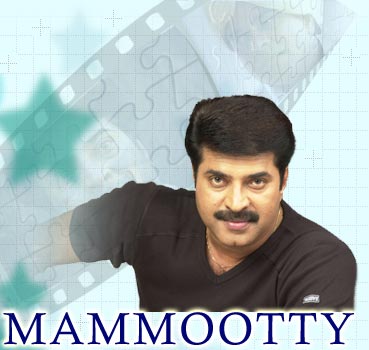|
|
||||||||||||
|
|
|||||||||||||||||||||||||||||||||||||||||||
Facets of MammoottyCinema finds expression through mechanical reproduction or, to borrow Walter Benjamin's phrase, mechanical recreation. When one has no awareness of this fact he fails technically in the medium of cinema. This is true of the director, cinematographer, editor and the actor. Mammootty as an actor has an immaculate perception of the actor's importance in this mechanical recreation. Mammootty's histrionic talents cannot be judged by the common yardstick for natural emoting. Mammootty recreates. It comes as a result of deliberate effort-homework. Vidhyadharan, the character he plays in the extremely interesting and award winning film Bhoothakanndi (directed by Lohitha Das ) takes up this challenge of disguising the self. Vidhyadharan, the cowardly, cynical and placid wins over the paradox that is the actor's physique. The audience does not imagine such an overtly masculine figure for this character. But as an astonishing alienation of self occurs in this remarkable portrayal. When Vidhyadharan is jailed this physique and demeanour take on another facet. Gripped by delusions in a fantasy world, Vidhyadaran's persona alters so convincingly. The trepidation, when he faces his rival and the passion as he faces the villainous warden of his own creation in the jail are clearly distanced, with his alienation of self. This dissimulation is possible because Mammootty makes his body a vehicle to project the spirit of the character he portrays. The effort that goes into it is priceless. True to the modernistic tradition Mammootty embodies the spirit of true professionalism and like any other professional he accepts roles that his job demands of him-so naturally , he plays character that seem facile or undemanding along with roles that test his talents. The recent technological miracles negate the role of the artiste. The haloed Star dies and technology breeds clones with techniques like morphing. Robots replace the living actor. Mammootty recognizes this and he strives for heights that only the human potential can realize, which is why we do not have consistent competence in Mammootty's career-graph. But we are lifted to certain awed heights as he creates those inspired moments of rare histrionics. When one talks of 'spontaneous ease' and 'natural emoting' One is referring to that combination of right and common expressions. Such natural performances delight but never transport. An actor really needs those inspired moments to conquer Time. Mammootty has separated mediocrity from excellence with his rare performances in Mathilukal, Ponthamada, Oru Vadakkan Veeragatha, Yavanika, Vidheyan, Bhoothakannadi, Mrigaya, Sooryamanasam, Valsalyam, Oral Mathram. At the end of every movie, the audience decides that this is finest performance, he cannot stretch it beyond and yet another character makes another mark. The distance Mammootty has traveled to play Ambedkar is marked by such triumphs. Though the computer has made this choice through physical akinnes, it is not an easy task to grasp the personality of a historical figure as Ambedkar's so vividly, following a two minute long F.D. footage. When the actor impersonates a person far removed in personality from himself, he does not work on physical similarities especially when the person is a historical figure : Mammootty resurrects Ambedkar's inner psyche. When a faceless forgotten figure from the legends is created this physical resemblance turns insignificant. Eisensteen recreated the face of Ivan the terrible from the image of a hawk from a woodcut by Hiroshige. The resemblance that Ivan the terrible of history holds with the hawk, is not one of physically but that of some psychological affinity that the two share. Often Mammootty transcends this physicality of the characters he plays, using this technique of Eisensteen's. Mada of 'Ponthanmada', (Directed by T.V.Chandran) the mentally retarded of 'Suryamanasam', the teacher in ' Thaniyavarthanam' have all negated the physique. However, Mammootty, the actor, resembles Mammootty the man in Bhaskara Patelar (Film Vidheyan directed by Adoor Gopalakrishnan) and as for Thacholi Chandu who has an image opposed to the popular one of a villain, Mammootty plays the role with studied finesse balancing the two opposed images ruling the minds of the audience. Chandu is not a villain but he had been Mammootty softens or rather kneads his rough masculinity to project the innage goodness of this villainous character he portrays wherein lies the triumph of the actor. When Ambedkar presents eternal moments of some superb acting; we begin to think Mammootty has scaled the ultimate heights but we realize this is not so when yet another portrayal awes us and shows the incredible human potential. This is Mammootty's alienated self. Peter Brooks writes on an incident that occurred while he was in Africa for a rehearsal of his 'Mahabharatha'. A few tribesmen, who had been chosen to perform in the play, were played a piece of western music on a synthesizer, they remained unaffected by the music and went on with their chores. However when the primitive Ha, Ha rhythm was sounded the excited group began to respond. Brooks says; ' the tribesmen respond to the world so innocently and naturally' It is impossible to make them act. No director would have this difficulty with Mammootty as the actor. Mammootty is an actor in all senses of the word. Mammootty's portrayals have etched an image of Mammootty, as Kunhalimarakar ( a Keralite ware hero who fought against Portuguese rulers) in my mind, an image reinterpreted by history, an image quite quite unlike the war hero. Such an interpretation comes easily to Mammootty far more easily than it does to any other Indian actor. (This was originally appeared in Malayalam, in the July 30 1999 issue of the Madhyamam weekly published from Calicut, Kerala. M.A.Rahman is a writer and film maker from Kerala who won the National award for his documentary Basheer the man.) |
||||||||||||||||||||||||||||||||||||||||||||

